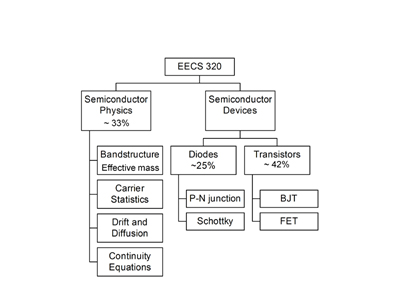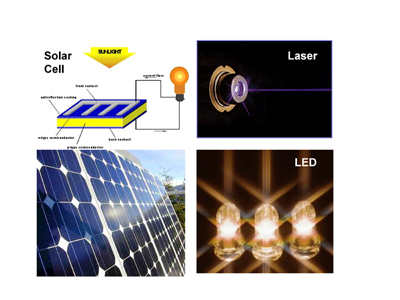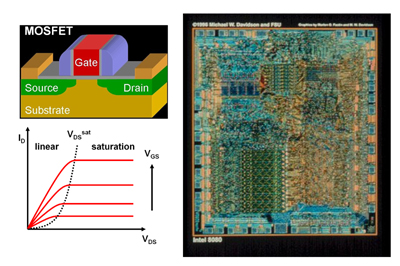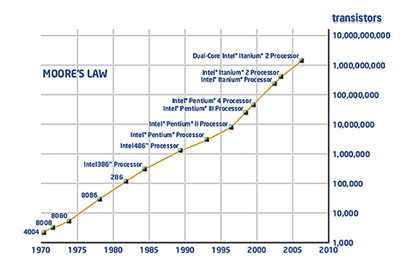EECS 320: Introduction to Semiconductor Devices
Instructor: Professor Zetian Mi
Coverage
This is an introductory course to semiconductor devices. We begin with a discussion on how electron energy bands are formed in semiconductors and their relationship to their properties, followed by discussions of equilibrium statistics of electrons and holes, electron drift and diffusion currents, and generation and recombination processes. We then examine the principles and operation of key semiconductor devices used in today’s electronics: diodes, light detectors and emitters, solar cells, and transistors. The goal is to develop a solid understanding of the device concepts that are needed in a broad range of semiconductor and circuit (analog, digital and VLSI) design and engineering.
Additional Information
Keys to success: This course requires you to think and understand concepts. The ability to perform mathematical calculations, or reproduce a problem solving procedure alone will not allow you to succeed. The concepts in this course are more abstract than most 2xx and 3xx EECS courses, with a higher demand on critical thinking and lesser demand on repetition and mechanical calculations. It is essential that you develop good study habits: read before lecture, attend and actively participate in all class sessions, and be sure to understand concepts in homework (do not merely seek the answer).
Textbook(s)
Pierret, Robert F. Semiconductor Device Fundamentals. 2 Revised Ed ed. Toronto: Addison Wesley, 1996.
Syllabus
- Introduction
- Chapter 1 Crystal Structures and Energy bands
- Chapter 2 Carrier transport in semiconductors: scattering, mobility, drift, diffusion, generation, recombination
- Chapter 3 PN diodes: electrostatics, I-V, non-ideal, transient, LEDs, solar cells, Schottky diodes
- Chapter 4 BJTs: electrostatics, I-V, circuit models
- Chapter 5 FETs: MESFETs, MOS capacitors, MOSFET threshold, I-V, non-ideal, circuit models, CMOS
- Other topics, e.g. Moore’s Law and scaling challenges




 MENU
MENU 
